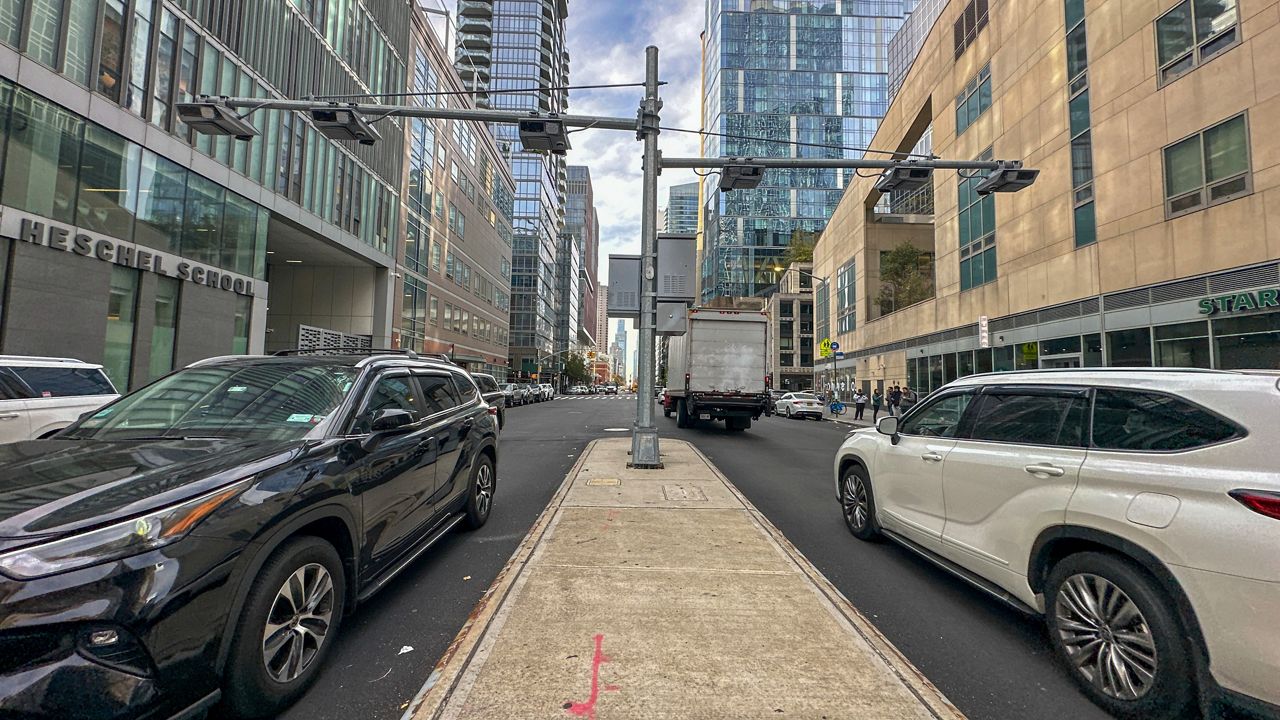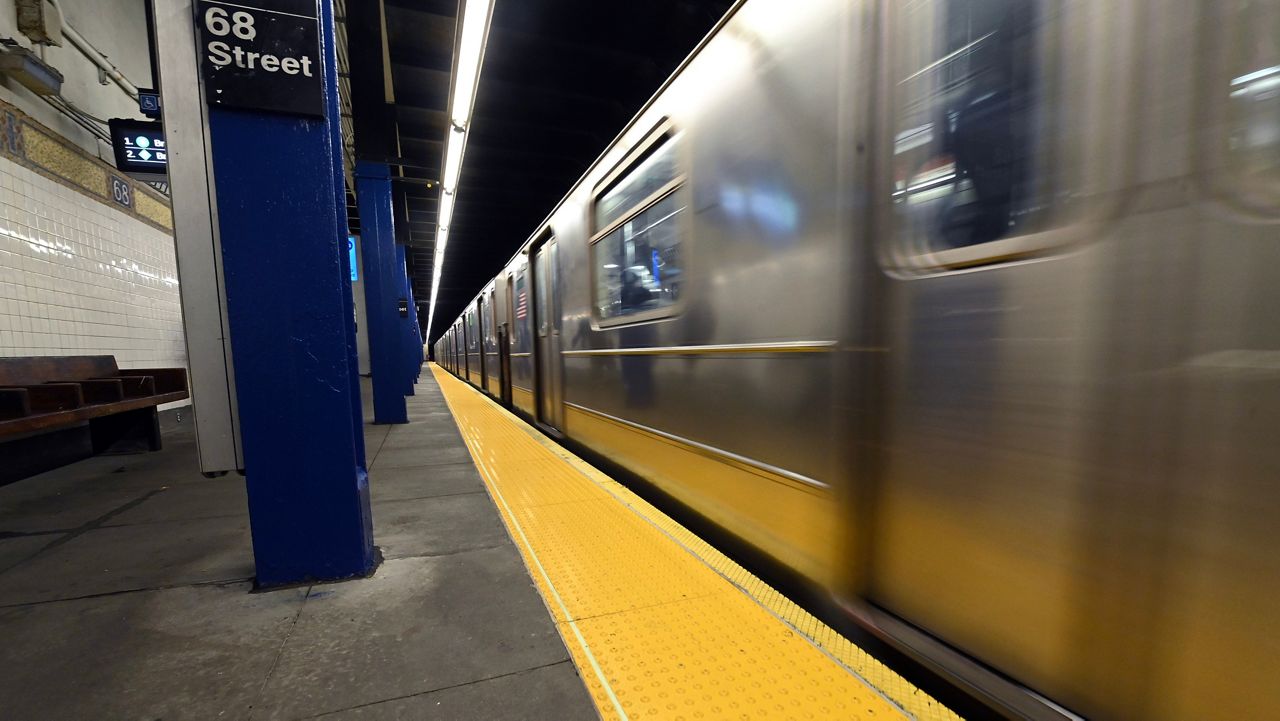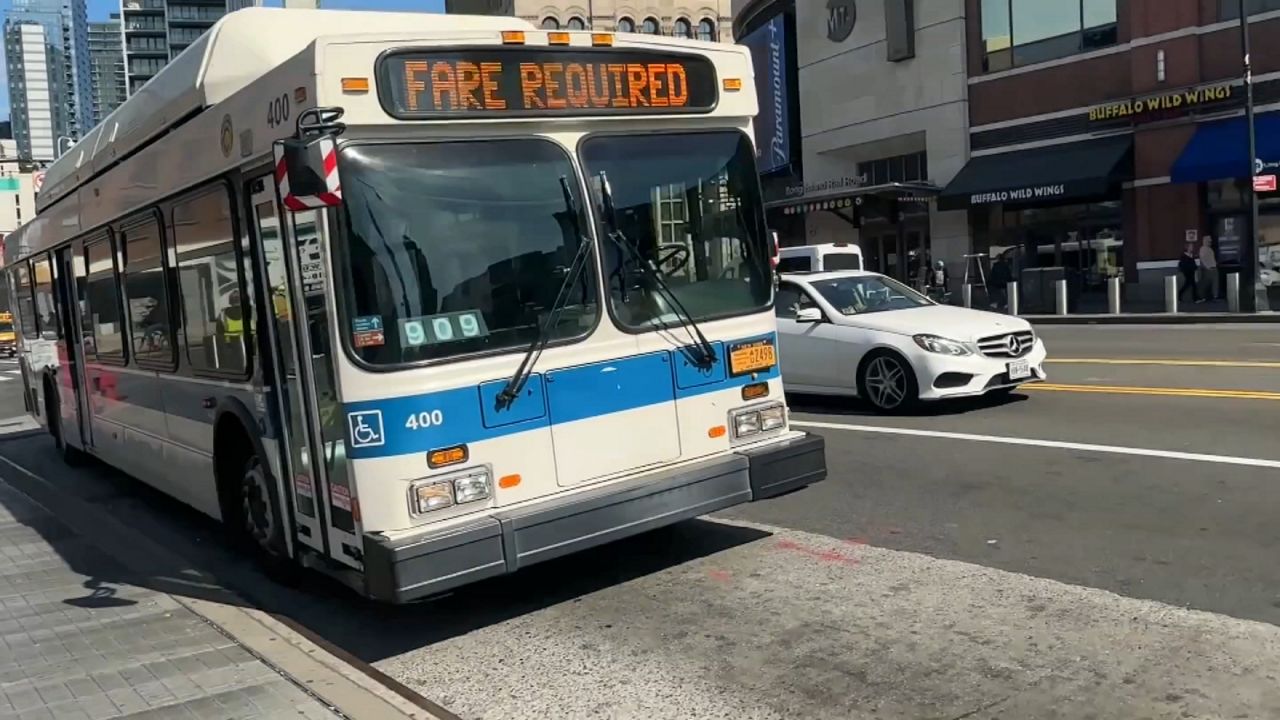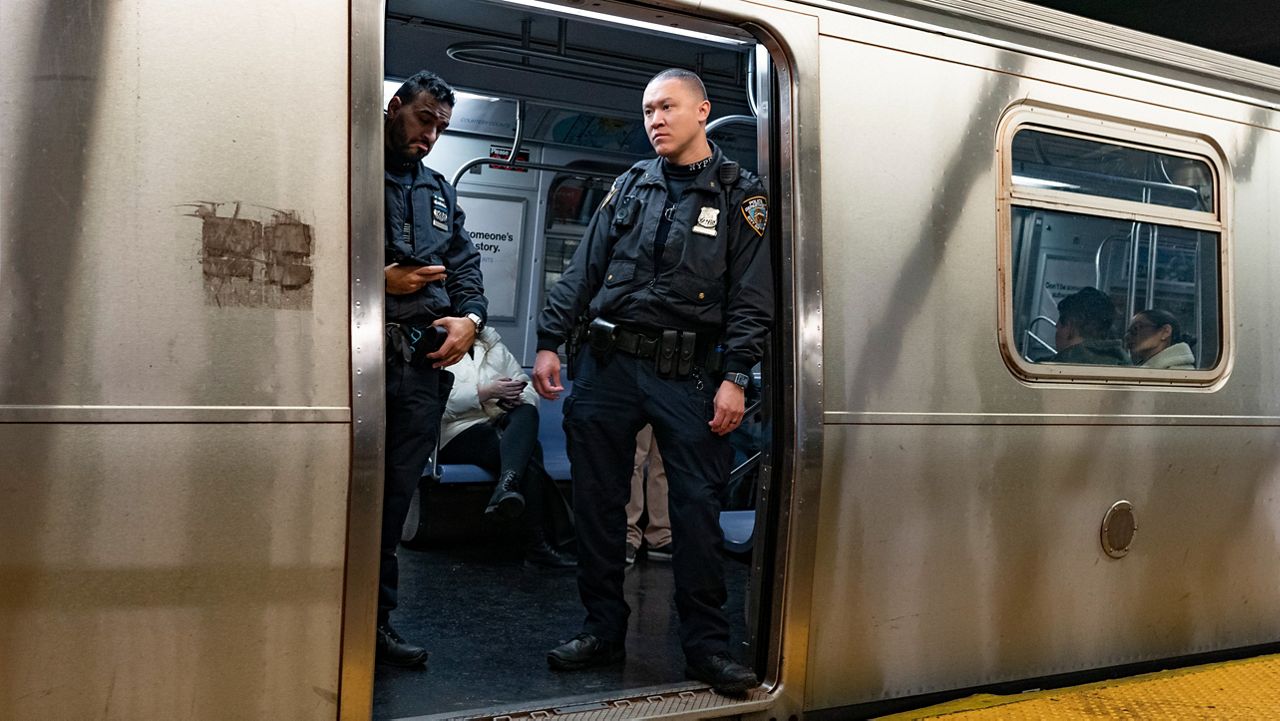A fast runner would beat New York City buses. In October, MTA buses averaged eight mph, their slowest monthly pace since 2019. The B41 along Flatbush Avenue averaged 6.5 mph.
Millicent Scott has been taking it for 30 years, but sometimes decides not to.
“Sometimes it takes too long, the 41 takes too long too long," she said. "So if I see the dollar van come, I jump on it.”
Scott said a dedicated bus lane could help.
“It helps [the route] where I live, by Rogers, the 44,” Scott said. “Very quick.”
Instead, the B41 must dodge double-parked cars and trucks. A dedicated bus lane which can increase speeds by 10%. It’s on the transportation department’s bus priority list.
For a second year, the DOT fell short of the mandated number of bus lane miles it’s required to build by law.
“So last year we were at about 10 miles, give or take, depending on how you count,” said Danny Pearlstein, policy and communications director at Riders Alliance. “This year I don’t know if we’ve even reached 10 miles yet and we’re supposed to be at 30 miles. And the mayor has said, ‘you can throw out the expectations’ because nobody’s going to judge him that way. Well, bus riders are going to judge him.”
The DOT said it could not give the total amount of completed bus lanes. Instead, the department issued a statement: “Our bus priority and accessibility projects this year will improve commutes for more than 225,000 daily bus riders.”
Even on completed projects, like Fordham Road, where the MTA wanted a bus lane offset from the curb, the DOT put in a curbside one. The result was just more obstacles. The lack of progress was disappointing to New York City Transit president Richard Davey.
“We have a long way to go,” Davey said. “Wait times are the top issue for our customers and one of the ways to attack that is protected bus lanes.”
The MTA is taking its own action. By the end of 2024, it will add 900 camera-equipped buses on 28 routes. They will not only ticket vehicles blocking the bus lane, but double-parkers too.
The agency said routes with cameras increase speeds by an additional 5%. The program, called ACE, will expand again by 2028. The NYPD announced late last month it’s stepping up enforcement immediately.
“We’re creating a bus lane enforcement task force,” said NYPD transportation chief Philip Rivera at November’s New York City Transit Subway and Bus Committee meeting. “Certainly ACES is the way of the future. But until that’s in full effect, our primary mission is going to be to deter parking violations in bus ways, bus lanes and priority corridors.”
The NYPD is dedicating 85 traffic agents to 18 bus routes based on both their high volume and delays. The task force also includes 15 dedicated tow trucks.









